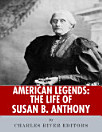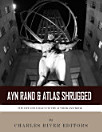Evita: The Life of Eva Perón
About this ebook
At the same time, the presence of the major artifacts of Evita’s person in these particular locations is also ironic and revealing of the great social divisions over which she presided. Botánico is a prestigious and wealthy neighborhood, and the Recoleta is the burial place of Argentina’s oligarchy; Eva Perón prided herself on having antagonized and earned the hatred of precisely these social classes. Over 50 years after her death, Perónism, the political philosophy devised by her and her husband Juan Domingo Perón, remains a potent force in Argentine politics (the current president identifies herself closely with the Peróns and their legacy), but it also continues to inspire deep enmity. While a large portion of the country sees Evita as a symbol of national pride, there is also a significant sector that sees her as an impostor and a demagogue whose brilliant but irresponsible manipulation of mass politics helped sink the country into chaos. Whereas some controversial political figures tend to become more broadly and neutrally admired as the distance from their lifespan grows, within her own country Evita remains as much a lightning rod as ever.
Since her death, the mythology and legend of Evita have grown monumentally. Though millions worshipped Eva, who nearly became the Vice-President of Argentina before her premature death, opinions of her still vary between two extremes. While some think of her as an angelic woman who sought to uplift women and the poor, others view her as a self-serving, egotistical, and embittered woman who used sex to rise up Argentina’s social and political ladder and seek vengeance on the upper classes. Evita: The Life of Eva Perón humanizes the youngest of 5 siblings who once had more modest ambitions as Eva Duarte, and it explores the mythology and legacy that have grown around Evita, examining her representations in literature, film, and theatre to uncover the truth behind her enigmatic existence.








